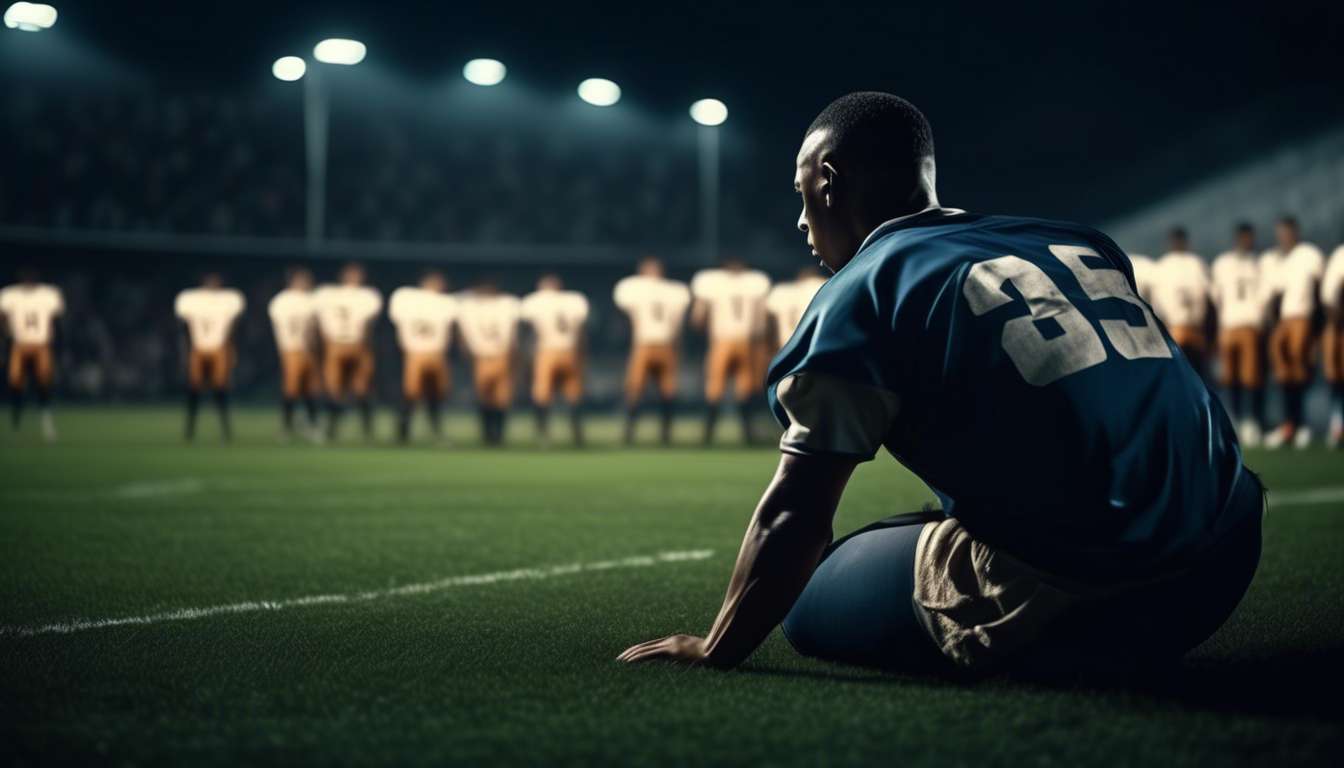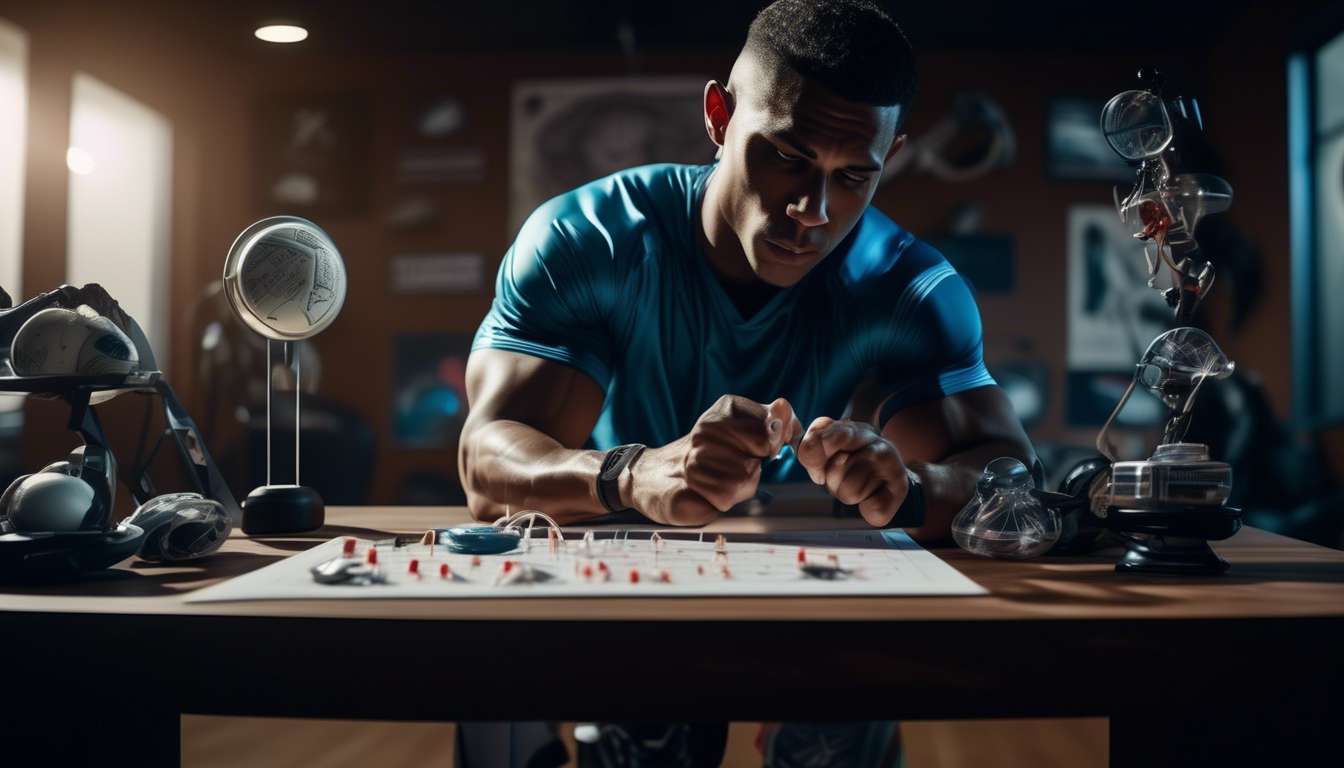In the world of sports, we find ourselves constantly fascinated by the intricate dance between science and superstition. As athletes, coaches, and fans, we often rely on data-driven strategies and scientific principles to guide our decisions. Yet, we cannot ignore the allure of rituals and beliefs that defy logical explanation.
Exploration of Popular Sports Theories
We delve into the compelling tension between these two forces:
-
Scientific Advancements in Sports
- Revolutionized understanding of athletic performance.
- Areas such as biomechanics and nutrition.
-
Enduring Power of Superstition
- Rituals and lucky charms maintain a presence.
- Influence in locker rooms and the hearts of athletes and fans.
Our goal is to unravel how both science and superstition coexist, influence, and sometimes clash on the field, court, or track. By exploring these diverse perspectives, we aim to better understand how they shape our collective experience and passion for sports.
The Science Behind Athletic Performance
Athletic performance hinges on a complex interplay of physiological, biomechanical, and psychological factors. As a team, we are fascinated by how these elements work together. It’s thrilling to explore the science that helps us achieve peak performance.
Biomechanics plays a crucial role in optimizing our movements and minimizing injury risks. By understanding the mechanics of our bodies, we can:
- Enhance our techniques
- Improve efficiency
- Ultimately, boost our overall performance
Yet, amid all this science, superstition often creeps into our routines. We’ve all seen it—athletes with lucky socks or rituals they swear by. While science provides us with evidence-based strategies, these superstitions offer:
- A sense of control and comfort
- Mental resilience
- Team unity, creating a shared culture within our group
By integrating both scientific insights and personal rituals, we embrace an identity that’s both grounded in reality and enriched by tradition. Together, we strive to balance these forces and push our limits.
Biomechanics in Sports Analysis
In sports analysis, we delve into the intricate mechanics of human movement to optimize performance and reduce injury risks. Biomechanics offers us a scientific lens to understand how athletes move, jump, and sprint. By studying these movements, we can enhance athletic performance and ensure our beloved players stay on top of their game. Gone are the days when superstition dictated an athlete’s routine; now, we rely on data and precise measurements.
We’re part of a community that embraces the science behind sports. By integrating biomechanics, we gain insights that allow athletes to push their limits safely. For instance, analyzing:
- A runner’s stride
- A pitcher’s throw
can pinpoint inefficiencies or potential stress points. This understanding fosters a sense of belonging, as we collectively strive for excellence.
Superstition may still linger in locker rooms, but the power of biomechanics unites us in a shared journey towards peak performance. Together, we’re rewriting the playbook with science as our guide.
Nutrition’s Impact on Athletes
In our quest to enhance athletic performance, we can’t overlook the crucial role that nutrition plays in fueling our bodies and aiding recovery. Nutrition isn’t just about eating right; it’s a science that complements biomechanics, allowing us to harness our body’s full capabilities.
While some athletes might rely on superstition to gain an edge, we know that well-balanced meals and proper hydration are the true game-changers. We’ve seen how the right nutrients can improve endurance, strength, and overall performance.
Our shared goal is to optimize every aspect of our training, and nutrition is a vital piece of that puzzle. It empowers us to:
- Recover faster
- Train harder
- Stay ahead of the competition
Let’s focus on the tangible benefits nutrition provides, rather than seeking shortcuts through superstition. Together, we can embrace the science of nutrition and elevate our athletic journeys.
The Influence of Rituals
Many athletes incorporate rituals into their routines, believing these practices enhance focus and mental readiness. Whether it’s a specific warm-up sequence or a pre-game handshake, athletes find comfort in these familiar patterns.
These rituals, often perceived as superstitions, might seem trivial to outsiders, but they serve a deeper purpose. They offer a sense of control in high-pressure situations, allowing athletes to channel their energy and improve performance.
In the world of sports, where biomechanics and precision matter, rituals create a psychological anchor. Even though they might not directly impact physical capabilities, they can significantly influence the mental state, which is crucial for success.
By focusing the mind, rituals help athletes:
- Calm pre-game jitters
- Maintain consistency
- Enhance overall performance
We share these rituals as a community, bonding over shared experiences and traditions. They remind us that beyond the science and statistics, there’s a human element driving us forward together.
Lucky Charms and Superstition
Many of us find comfort and confidence in lucky charms that we believe tip the scales in our favor during crucial moments in sports. Whether it’s a well-worn cap, a special pair of socks, or a tiny token tucked into our gear, these items hold more than sentimental value. They’re intertwined with our belief in superstition, giving a psychological boost that can be as powerful as any physical training regimen.
While biomechanics focuses on optimizing athletic performance through physical movements and techniques, the mental edge provided by these charms can’t be dismissed. They serve as anchor points, helping us feel connected to something larger than ourselves. By holding onto these symbols, we strengthen our resolve and focus, creating a sense of unity and shared purpose with fellow athletes.
We might not have scientific proof that lucky charms improve our biomechanics, but they undeniably impact our mindset. In the world of sports, where confidence and morale can make all the difference, that’s a powerful advantage.
Superstition in Locker Room Culture
In locker rooms across the globe, rituals and superstitions are as integral to team culture as pep talks and strategy sessions.
We huddle together, sharing quirky pre-game routines, convinced they boost our athletic performance. Whether it’s the lucky socks we never wash or the specific order in which we lace our shoes, these rituals create a shared sense of identity and camaraderie.
Superstitions may not align with the science of biomechanics, but they offer psychological comfort, reducing anxiety and enhancing focus.
We find unity in these small acts, believing they can sway the outcome of the game.
As we prepare for competition, our superstitions become a collective ritual, a testament to our shared hopes and fears. These practices may lack scientific backing, but they bind us together, reinforcing our belonging to something bigger than ourselves.
It’s not just about performance; it’s about the belief that together, we can triumph against odds.
Clash of Beliefs on the Field
On the field, we often encounter a fascinating clash between evidence-based strategies and deeply held beliefs. As a team, we strive to enhance our athletic performance through the latest advancements in biomechanics.
Scientific Insights:
- Guide us in refining our techniques
- Help in optimizing our movements
- Aim for achieving peak performance
Yet, alongside this rational approach, many of us hold superstitions close to our hearts. Whether it’s wearing a lucky pair of socks or following a pre-game ritual, these practices provide comfort and a sense of control in the unpredictable world of sports.
We see this dynamic play out during games—coaches emphasize data-driven decisions, while players may rely on their personal rituals. This blend of science and superstition creates a unique tapestry of beliefs that unites us.
It’s a reminder that while logic and evidence can guide us, the emotional connection to our beliefs fosters camaraderie and a shared sense of identity on the field.
In this balance, we find our collective strength.
Unraveling Sports Mysteries
In our quest to understand the enigma of sports, we delve into the unexplained phenomena that captivate athletes and fans alike.
Key Questions:
- Why do some athletes perform spectacularly under pressure, while others falter?
- Is it all in the biomechanics of their movements, or does superstition play a role?
As a community that thrives on shared experiences and collective passion, we can’t help but wonder about the mysteries that linger in every game and competition.
We often witness athletes adhering to rituals—such as lucky socks or pre-game routines—that seem to defy scientific explanation. Yet, these superstitions might influence their mental state, boosting their confidence and, consequently, their athletic performance.
Biomechanics provides a lens through which we can:
- Analyze physical movements
- Optimize performance
- Offer concrete answers to some puzzles
However, the human element, with its quirks and beliefs, remains an integral part of the sporting world.
Together, let’s continue to explore these mysteries, blending science with the indefinable magic of sports.
How do mental health and psychological factors influence an athlete’s performance beyond scientific or superstitious explanations?
In our journey to understand athletes’ performance, we’ve seen how mental health and psychological factors play significant roles. Beyond scientific or superstitious beliefs, these aspects shape an athlete’s mindset and confidence.
The mind-body connection cannot be overlooked, as emotions, stress, and past experiences deeply impact performance.
Acknowledging and addressing these psychological elements are crucial steps towards enhancing an athlete’s overall well-being and success on the field.
What role does technology play in modern sports training and how does it intersect with traditional beliefs?
In modern sports training, technology plays a crucial role in enhancing performance. It helps us:
- Track progress
- Analyze data
- Optimize training routines
Despite these advancements, traditional beliefs still hold significance for many athletes. Balancing technology with these age-old practices can create a holistic approach to sports training.
By combining the best of both worlds, we can:
- Strive for peak performance
- Honor the wisdom passed down through generations
This integration ensures athletes benefit from both cutting-edge innovations and timeless knowledge.
How do cultural differences impact the prevalence and types of superstitions observed in sports around the world?
Cultural Differences in Sports Superstitions
Cultural differences greatly influence the superstitions we see in sports globally. These beliefs stem from diverse traditions and customs unique to each society.
Rituals and Practices for Luck and Success
- Athletes adhere to various rituals and practices for luck and success, shaped by their cultural backgrounds.
- Understanding these cultural nuances helps us appreciate the rich tapestry of superstitions in sports worldwide.
The Beauty of Diversity in Athletic Rituals
Ultimately, these superstitions add a layer of intrigue and fascination to the competitive landscape, showcasing the beauty of diversity in athletic rituals.
Conclusion
In conclusion, the clash between science and superstition is evident in the realm of sports theories.
Science provides valuable insights into athletic performance through:
- Biomechanics
- Nutrition
- Psychology
- Training techniques
However, superstition continues to play a significant role, with athletes often relying on:
- Rituals
- Lucky charms
- Pre-game routines
The debate between evidence-based practices and traditional beliefs adds an intriguing layer to the sports landscape.
Ultimately, the blend of science and superstition contributes significantly to the mystique and excitement of sports.




